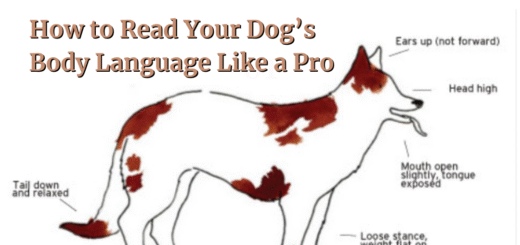Turning Digital Downloads into a Profitable Online Shop
When people think about selling online, they often imagine warehouses, packaging tape, and endless shipping labels. But there’s another way—one that doesn’t involve inventory at all. Digital products are one of the most overlooked yet powerful ways to create income online.
Here’s the beauty of it: you make a file once, upload it to a marketplace, and every time someone buys it, they receive it instantly. No printing, no shipping, no stock to manage. It’s as close to “set it and forget it” as business gets.
Planners, templates, and short how-to guides are some of the top sellers in this category. They’re useful, affordable, and endlessly reusable, making them an easy “yes” for shoppers. With the right mix of creativity and consistency, these digital tools can turn into a reliable stream of income.
Why Digital Products Are Worth Your Time
Digital downloads work because they solve a universal problem: people want quick, polished solutions.
- A bride planning her wedding doesn’t want to design invitations from scratch. She’ll happily pay $10 for a template she can edit in minutes.
- A new business owner might need a budget planner or client contract outline. Spending $15 to save hours is a no-brainer.
- A busy parent looking to organize their week will grab a printable meal planner or cleaning chart without hesitation.
For you, the creator, the upside is equally strong:
- No inventory risk. You don’t pay for stock or shipping.
- Unlimited sales. One product can be sold thousands of times.
- Flexibility. Work on it when you can—an hour here, an afternoon there.
- Scalability. Each new product adds to your catalog, stacking income potential over time.
Mini-Guides That Sell: The 10-Page PDF
You don’t need to write a full eBook to make money. In fact, short, laser-focused guides often sell better because buyers want fast solutions.
A well-designed 10-page PDF can be created in a weekend and priced anywhere from $5–$20. It doesn’t need to be complicated—just practical, attractive, and easy to follow.
Examples of profitable mini-guides include:
- “How to Style a Living Room with Thrift Finds”
- “5 Easy Mediterranean Recipes for Beginners”
- “Decluttering in 20 Minutes a Day: A Starter Plan”
- “How to Build an Etsy Shop that Actually Gets Sales”
- “The Beginner’s Guide to Mindful Journaling”
Once complete, you can sell it on Etsy, Gumroad, or your own site. You can also bundle several guides into a themed pack (like “Spring Home Refresh Kit”) and raise the price.
Planners: The Digital Product Goldmine
Planners are among the most consistent sellers because they’re both practical and customizable. Everyone needs structure, but they want it delivered in a way that fits their lifestyle or aesthetic.
Types of planners that perform well include:
- Daily or weekly productivity planners
- Budget and expense trackers
- Meal and grocery planners
- Fitness and wellness journals
- Academic or homeschool planners
- Business goal trackers
- Self-care and mood journals
The possibilities are endless. A yoga instructor might create a “30-Day Mind-Body Wellness Journal.” A teacher could sell “Lesson Planning Templates for Busy Educators.” A parent blogger might design a “Family Chore Chart System.”
Design platforms like Canva make this process simple. You can build clean, fillable layouts with calendars, checklists, or reflection prompts. Once your template is complete, export it as a PDF and you’re ready to sell.
For a bonus stream of income, consider uploading your planner to Amazon KDP, which lets customers order physical printed versions of your designs—without you having to manage a single shipment.
Templates: Done-for-You Tools That Save Time
Another evergreen category is templates, where you create the framework and the buyer personalizes it. They’re especially popular for events, small businesses, and content creators.
High-demand template categories include:
- Wedding and baby shower invitations
- Editable social media posts or story packs
- Small business tools (menus, flyers, thank-you cards)
- Resume or portfolio layouts
- Product packaging designs
- Printable holiday cards or gift tags
Think of it this way: you’re selling people time. A small boutique owner doesn’t want to spend hours designing a price list. But if you sell a $12 editable Canva template, you’ve solved their problem instantly.
Where to Sell Your Products
You don’t need your own website to get started—many creators launch on ready-made platforms where buyers are already searching:
- Etsy – Best for planners, templates, and how-to guides. Shoppers come here specifically for creative downloads.
- Gumroad – A clean, minimalist platform perfect for creators who want flexible pricing (including pay-what-you-want options).
- Shopify or Payhip – For sellers ready to build a branded storefront with more control over pricing and marketing.
Each of these platforms automates delivery, meaning once the file is uploaded, every sale is hands-free.
Seasonal vs. Evergreen Products
A smart digital shop balances both evergreen products (steady sellers year-round) with seasonal products (limited-time spikes).
Evergreen bestsellers:
- Weekly budget planners
- Fitness trackers
- Business checklists
- Wedding invitations
- Journaling prompts
Seasonal sellers:
- Holiday gift tags or Christmas planners
- Summer vacation packing checklists
- Valentine’s Day cards
- Fall decor guides
- Back-to-school organizers
By mixing the two, you ensure consistent sales with bursts of extra income during peak times.
Building Systems That Run Themselves
The magic of digital products is automation. Once you’ve uploaded your design, platforms like Etsy and Gumroad handle delivery instantly. Want to build an email list at the same time? Use tools like ConvertKit or Flodesk to send free PDFs in exchange for sign-ups.
With this setup, you’re no longer trading hours for dollars. You’re building assets that generate income in the background.
Conclusion: A Business That Grows While You Rest
Selling digital downloads is one of the simplest, most scalable ways to earn online. You don’t need warehouses, customer service teams, or endless cash flow. You just need to create files that save people time, help them stay organized, or inspire them in some way.
Start with one product—a short PDF, a planner, or a template. Upload it. Test the waters. Each product you add is another digital asset that works for you 24/7.
Over time, you’ll look back and realize you’ve built not just a shop, but a library of solutions that customers are happy to buy again and again.


